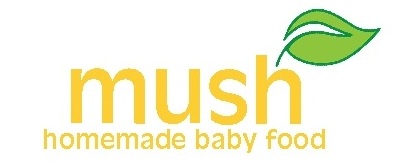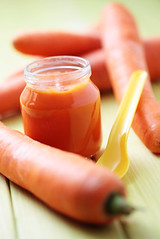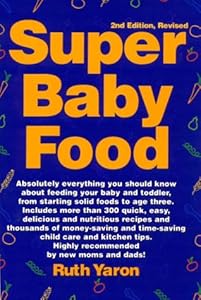Supporting the Immune System for the Season Ahead:
Kim Corrigan-Oliver, CNP, ROHP
Is It The Germ or The Terrain?
When we get sick we often blame “a germ”. Is the germ really responsible? Or is it our terrain that could not handle the attack? Our bodies require a ton of resources to mount and sustain an immune response. If it has not had enough good nutrition, sleep, love and other important substances the immune response will be weak and the body will not be able to defend itself.
Strengthening the Terrain
Many of us are realizing that rushing to the doctor’s office for every little sniffle is no longer a good idea. It is time to go back to natural ways – gentler ways with no side effects, ways that support the immune system.
There are a number of things we can do to strengthen the terrain:
Breast Milk
Breastfeeding as long as possible means a strong immune system for your child. Breast milk is more than food, it supplies factors needed to develop strong immunity and protect your baby against disease. Breastfeed as long as you and your baby are willing participants.
Ensure Adequate Antioxidant Intake (from Real Food)
Antioxidants are immune protectors. Antioxidants are compounds in food that protect and repair cell damage caused by environmental pollution, pesticides, sunlight and normal body processes. They include: beta-carotene, vitamins C and E, and minerals zinc and selenium. It is best to get antioxidants from whole foods.
Beta carotene increases the number of infection fighting cells, natural killer cells and helper T-cells, as well as being a powerful antioxidant that mops up excess free radicals.
Sources of beta carotene include: carrots, spinach, apricots, sweet potatoes, winter squash, red pepper, cantaloupe, pumpkin, broccoli and dark leafy greens.
Vitamin C increases the production of infection fighting white blood cells and antibodies.
Sources of vitamin C include: citrus fruits, tomatoes, strawberries, red peppers, pineapple, guava, black currents, cabbage, turnip greens, broccoli, cantaloupe, kale, papayas, cauliflower, spinach and cranberries.
Vitamin E stimulates the production of natural killer cells that seek out and destroy pathogens and cancer cells. It enhances the production of B-cells – the immune cells that produce antibodies to destroy bacteria.
Sources of vitamin E include: nuts, seeds, wheat germ, whole grains, oatmeal, broccoli, sweet potato, alfalfa, lima beans, avocados, liver, egg yolks and butter.
Zinc increases the production of white blood cells that fight infection and helps them fight more aggressively. It also helps white blood cells release more antibodies and can increase the number of infection fighting T-cells. Sources of zinc include: wheat germ, oysters, clams, liver, other meats, egg yolks, pumpkin and sunflower seeds, sesame seeds, peanuts and almonds.
Selenium increases natural killer cells. Sources include: brazil nuts, whole grains, vegetables (if selenium content in soil is high), brown rice, egg yolks, cottage cheese, sunflower seeds, and garlic.
Fats are needed for optimum health, are essential for growth and development, are used for building membranes around every cell in the body and can enhance or impair our immune function.
EFAs – essential fatty acids are vital to normal immune function and require our attention to ensure we are meeting our needs. Deficiencies in EFAs increase our susceptibility to infections; increased arthritis conditions, asthma, eczema, hair loss, liver and kidney degeneration, growth retardation, vision problems and learning problems.
The EFAs of most concern are omega 3 fatty acids. Omega 3 fatty acids are difficult to find in the diet unless special effort is made to include them. It is the one EFA that most children tend to be deficient in. Sources of omega 3 include flaxseeds, chia seeds, hemp seeds, cod liver oil, walnuts and fish.
For breastfed babies under the age of 1, mom should ensure adequate intake so breast milk is rich in essential fatty acids. For formula fed babies, there are many formulas on the market now which supply essential fatty acids.
Probiotics
The word probiotic means “for life”. Probiotics provide good bacteria for our gastrointestinal tract, where up to 80% of our immune system is located. Probiotics affect the body in a number of ways that promote stronger immunity including increased white blood cells, increased phagocytic (cell eating) activity, increased viral killing cells (kill viruses as they enter the body), they provide added immunity while taking antibiotics and they provide protection for weakened immune systems.
A supplemental form of probiotic is best, as food sources cannot provide enough.
For infants up to 12 months Natogen by Seroyal is an excellent product that is easy to give. After age 1 HMF powder is an excellent choice and for adults HMF Forte. Post antibiotic treatment HMF Replete will help to re-inoculate the digestive tract.
Vitamin D
Research is beginning to find that vitamin D, most commonly associated with the development and maintenance of strong bones, may also play a key role in the immune system. Higher levels of vitamin D have shown to enhance immunity. There has been a clear link established between vitamin D deficiency and an increase in the incidence of respiratory infections in children.
Sources of vitamin D include: natural sunlight, unsunscreened skin exposed for 20 to 30 minutes daily, cod liver oil, fortified foods, or supplemental vitamin D in drops or tablets. It is difficult for us to get enough vitamin D, so supplementation is necessary, especially in the winter months.
The Vitamin D Council recommends a dose of 1000IU for children under the age of 1 who are breastfed; those on formula will need 600IU, 2000IU for children age 1 to 4 and 3000IU for those between the ages of 4 and 10.
Staying healthy this winter means more fun, and less stress. Eat real food, ensure adequate intake of omega 3 fatty acids and get your probiotics and vitamin D – while this won’t guarantee a sick free winter, it will make the immune system stronger and better able to fend off whatever comes calling.
Be well and stay well.
Kim offers consultations, workshops and cooking classes focusing on preconception through to toddlerhood. She assists clients with preconception care, pregnancy nutritional needs, pregnancy issues and postnatal care. Her pediatric nutrition services help guide parents to optimize their baby’s health and wellness, setting them up for good health and well being later in life Connect with Kim on Twitter @yourgreenbaby. Check out her blog nutrition blog at www.yourgreenbaby.ca and check out her mommy blog Mothering with Mindfulness at www.motheringwithmindfulness.blogpsot.com.

































